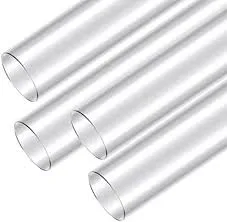Aug . 15, 2024 08:27 Back to list
Exploring the Versatility and Benefits of PVC Plates in Various Applications
The Versatile Applications of PVC Plates
Polyvinyl chloride (PVC) is one of the most widely used synthetic plastic polymers in the world. It is renowned for its durability, versatility, and cost-effectiveness. Among its many forms, PVC plates stand out due to their unique properties and myriad applications across various industries. This article explores the characteristics of PVC plates, their advantages, and the diverse areas in which they are utilized.
Characteristics of PVC Plates
PVC plates are rigid sheets made from polyvinyl chloride, often available in a variety of colors and thicknesses. They possess a smooth surface, which can be easily printed on or painted, making them aesthetically pleasing for various applications. The material is lightweight, yet it exhibits remarkable strength and resistance to impact, chemical corrosion, and UV exposure. Additionally, PVC plates are non-toxic and environmentally friendly, contributing to their increasing popularity in recent years.
Advantages of PVC Plates
One of the primary advantages of PVC plates is their durability. Unlike wood or metal, PVC does not rot, corrode, or rust, making it ideal for both indoor and outdoor applications. This resilience translates into a longer lifespan, reducing the need for frequent replacements. Furthermore, PVC plates are relatively easy to work with. They can be cut, drilled, and shaped with standard tools, allowing for customization in various projects.
Another major benefit is their cost-effectiveness. PVC plates are generally more affordable than alternatives such as acrylic or polycarbonate, making them an attractive option for budget-conscious consumers and businesses. The low maintenance requirements of PVC also contribute to overall cost savings, as owners do not need to invest in protective coatings or treatments.
pvc plate

Applications of PVC Plates
The versatility of PVC plates allows them to be used in numerous industries and applications. In the construction sector, they are commonly utilized for signage, wall panels, and barriers. Their weather resistance makes them perfect for outdoor applications, while their smooth surface allows for easy cleaning in environments that require high hygiene standards, such as hospitals or laboratories.
In the realm of advertising and marketing, PVC plates serve as an excellent medium for printing signs and banners. Their vibrant colors and ability to withstand the elements contribute to long-lasting promotional materials. Additionally, PVC plates can be used in interior design for decorative elements, creating a modern aesthetic with their sleek appearance.
In the manufacturing industry, PVC plates play a crucial role in packaging and production processes. They are often employed as dividers, trays, or work surfaces due to their resistance to chemicals and wear. This makes them an ideal choice for laboratories and workshops where safety and cleanliness are paramount.
Moreover, in the realm of DIY projects and crafts, PVC plates have gained popularity among hobbyists and artists. Their availability in various colors and thicknesses allows for creative expression, making them suitable for sculptures, models, and home décor items.
Conclusion
In summary, PVC plates are an incredibly versatile material that offers numerous advantages across multiple applications. Their durability, cost-effectiveness, and ease of use make them a preferred choice in construction, advertising, manufacturing, and even creative projects. As industries continue to seek reliable and sustainable materials, the demand for PVC plates is likely to grow, solidifying their position as a staple in various sectors. Whether for commercial use or personal projects, PVC plates provide a practical solution that meets the needs of diverse consumers.
-
HDPE Steel Belt Reinforced Spiral Corrugated Pipe | High Strength
NewsAug.17,2025
-
HDPE Pipe Fittings: Durable, Leak-Proof Solutions
NewsAug.16,2025
-
Premium CPVC Sheet: High-Temp & Chemical Resistant Solutions
NewsAug.15,2025
-
Durable PPR Pipe for Hot & Cold Water Systems - Easy Install
NewsAug.14,2025
-
Durable HDPE Sheet | Versatile & Impact-Resistant Plastic
NewsAug.13,2025
-
Premium PVC Soft Sheets: Clear, Flexible & Durable
NewsAug.12,2025

